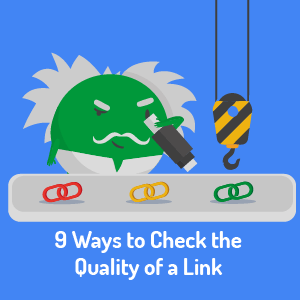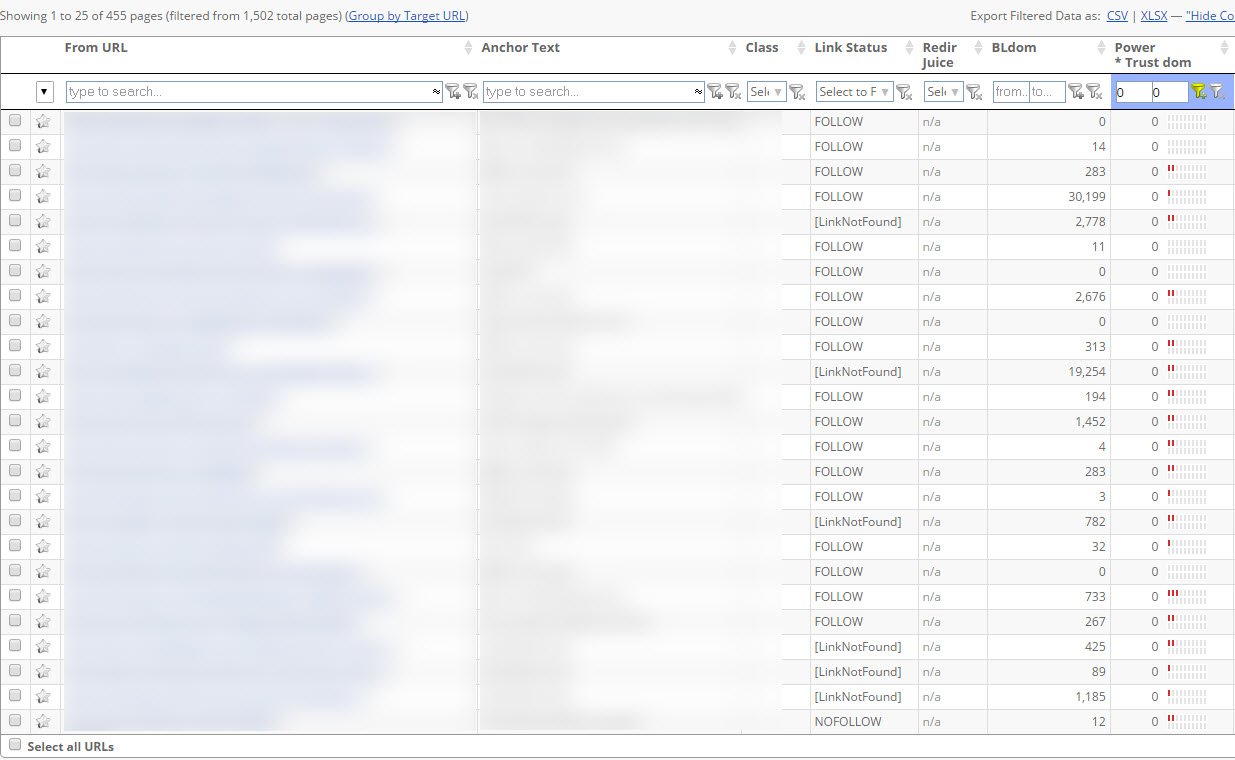9 Ways to Check the Quality of a Link
Is that a good link or not?
So many Google Updates and websites losing visibility on search engine results have made most SEOs question themselves. “What still works to improve a website’s ranking?”
On-Page and content marketing are a trend, but they are not enough. As long as Google says backlinks are relevant to ranking, you’ll have to keep building links. However, only high quality links can boost rankings, and that’s why you have to constantly check who is linking to your website.
Here are 9 very practical ways to check the quality of your backlinks, including detailed HOW-TOs on using LinkResearchTools (LRT) for your link check.
We look forward to your feedback and always appreciate you spreading the word on this work.
- Enjoy & Learn!
Christoph C. Cemper
Check out our plans & pricing
Start today.
Are backlinks still relevant to search results?
All links are different.The whole of this article is about backlinks. Some say social media is more important now, some say that OnPage SEO and content is more important than backlinks. I believe this to be 100% untrue.
But don't take it from me, Google confirmed many times that links are the #1 ranking factor, alongside content.
Ranking without links is really, really hard. pic.twitter.com/0WupJp5tFL
— Christoph C. Cemper (@cemper) October 28, 2016
https://twitter.com/cemper/status/791930029584285696
Change the way you think about links
First of all, when you think about backlinks, you need to understand that not all links are not at all the same. When doing link analysis, ask yourself:
- how many linking pages, subdomains, domains, and root domains?
- how many links per month?
- what kind of links (Follow, No Follow, Redirects, Javascript, Frames, ..)?
- what link Power and Trust?
- which linking keywords ("money" or "brand")?
- what link risk?
In addition, these factors can be evaluated differently in different cases. A link can also be good or bad depending on the industry, the country, the language and the keywords. Unfortunately, there is no generic rule. For example, it is NOT the same whether a domain links to 1,000 subpages, or whether 1,000 domains link to a subpage. That's why we always recommend using the Site-Wide filter in LinkResearchTools.
Apart from the link type, the quality of the page a link exists on is also of great importance. Furthermore, the quality of the domain that the page is on too. It makes sense that if the domain or the page is shady in any way, it would not be a good idea to have your link on there. For this reason, most of the time we will be considering the source page of the link and the domain that it belongs to.
For the sake of determining the quality of a backlink, I have grouped the various qualities of a back link into 9 categories that you need to check. These are:
- Is the link on a page that is blacklisted or banned?
- Is the link on a page that is dangerous?
- Is the link on a page of a weak domain?
- Is the link on a domain with a penalty?
- Is the link on a domain associated with a bad neighborhood?
- Is the link on a spammy directory?
- Is the link on a page with a massive amount of outgoing links?
- Is the link anchor text unnatural or suspicious?
- Is the link on a domain that is part of a link network?
1-7 can be assessed by considering an individual link, 8 and 9 need to be assessed by considering your existing links too.
To put the things that you need to check into nine categories was quite tough, so within each section, there are sometimes a few different scenarios that you need to be aware of.
You can use various tools included in the LinkResearchTools SEO toolkit to easily check all of these above points. LinkResearchTools has 150+ SEO metrics that help you assess the quality of a link.
1. Is the link on a page that is blacklisted or banned?
For various reasons, domains can become blacklisted. When they do, they are often listed at somewhere like the Spamhaus Domain Blocklist (spamhaus.org). Having a link on a blacklisted domain is not good.
1.1 How to test for blacklisted or banned domains
Unfortunately, there is no central place online where you can check a domain is blacklisted or banned.
However, you can run Link Detox to audit, or use the Link Opportunity Tool (LORT) or the new Link Simulator to find out.
If Link Detox finds that your link is on a domain which is blacklisted it will trigger the SUSP21 Rule. Link Detox checks a lot of blacklists to see if the domain is listed if it’s on a blacklist the link is bad. Luckily sites that trigger the SUSP21 rule are rare, but Link Detox helps you detect them. If you find one in your backlink profile, disavow it. If it's a link you were planning to build, stay away from it.
2. Is the link on a page that is dangerous?
Without realizing it, your links may be on a domain that is listed as dangerous. This means that the domain's theme is listed as dangerous with possible malware, malicious activity or a virus which is classified as a bad neighborhood. As you would expect these are terrible links to have, with no exceptions.
2.1. How to test for dangerous domains
If Google detects malware, virus or some other malicious activities, the site will be listed as dangerous, the owner will get a message in Google Search Console and the site visitors will see this:
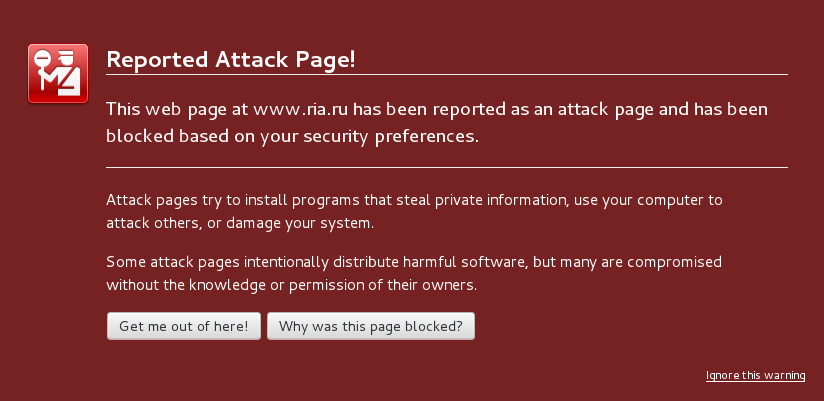
In most cases, the owner has nothing to do with this. Usually, they are victims of malware attacks. But Google doesn’t care if it’s the owner’s fault or not. They will just list this website as dangerous and if the owner doesn’t manage to solve this problem, the site will keep on being blacklisted. If you have a link from such a website, get rid of it immediately.
When you look at your backlink profile, you can use Link Detox to test for dangerous domains. Dangerous domains will trigger the TOX2 rule in Link Detox. The TOX2 rule is actually triggered by a mixture of things, but it will always mean that the domain is dangerous.
You can easily filter for any of the rules in the data table of Link Detox (DTOX) like this:
3. Is the link on a page of a weak domain?
Having your link on a domain that is weak is not a good place for it to be. Here are some of the scenarios you might come across:
3.1 Your link is on a very weak page that has no external links
An example of this would be a forum or a page created by some automated spamming activity. Sometimes it might look like a normal page, but is just weak, like this one on http://dev.freebetsplus.co.uk/component/content/article/86-william-hill/291-william-hill-poker linking to williamhill.com with many "money keywords":
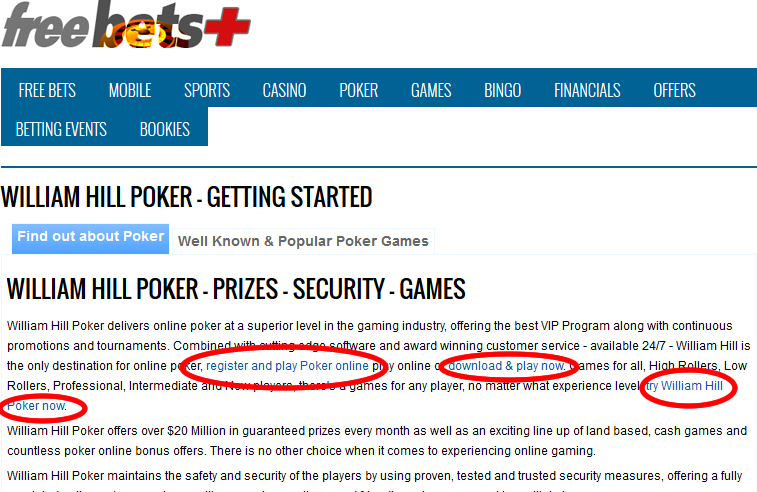
3.1.1 How to find weak pages using Backlink Profiler (BLP)
With a BLP report you can filter the weak pages like this:
- LRT Power*Trust™ = 0
- LRT Power*Trust™ Domain < 5
The LRT Power*Trust metric is more than a replacement for Google Toolbar PageRank. This metric helps you assess the quality of a page, domain or top domain in no time. By using it in your daily SEO workflow, you can get a quantitative idea regarding the trustworthiness and power of any link.
3.1.2 How to find weak pages using Link Detox (DTOX)
Link Detox will trigger SUSP1 rule for weak backlinks. These are links coming from a page on a very weak domain. For example a link from a page without external links (which is often the case with a forum) or a link resulting from some automated spamming activity or a link on a page of a link directory.
3.2 Your link is on a very weak domain
The reasons a domain may be weak could be that it is new or very weak or because it has a penalty.
3.2.1 How to test using a Backlink Profiler (BLP) report
Start a BLP report and remember to tick "Trust & Power Details" in the "Metrics" section. Then filter weak links by LRT Power*Trust™ dom = 0. this filter will give you a list of the weakest domains. Don't build links on these domains.
3.2.2 How to test using a Link Detox report
A link coming from a very weak domain that is probably new or has been penalized by Google will trigger SUSP2 rule in Link Detox. A page that has been penalized by Google is going to be a bad place to have your link.
3.3 The link is on a young domain
If the link is on a young domain, it may not be a bad thing as the site might grow and become more powerful. However, if it does not, it could become a problem later.
3.3.1 How to test using a Link Detox report
Such a link will trigger the SUSP18 rule. The SUSP18 rule means that it’s a link from a page that is coming from a young domain (less than 6 months old) that has a low LRT Power*Trust Domain below 3.
4. Is the link on a domain with a penalty?
As you would imagine, if Google has penalized a domain and your link is on that page, it is not going to value your link at all. Even worse, a link on a penalized domain is now one of the most harmful links you can have.
I removed a Manual Spam Action penalty from a site of mine that was hit by Penguin 1.0 in April 2012. The site got penalized because I built links to it for years, which worked fine until Penguin came along. Here is an example of a link on http://kilmarnockmotorhomehire.yolasite.com/ which links to http://www.motorhomesdirect.co.uk/motorhome-hire.html. This link that once worked is now highly toxic. (btw this link could not be removed so I had to disavow it)
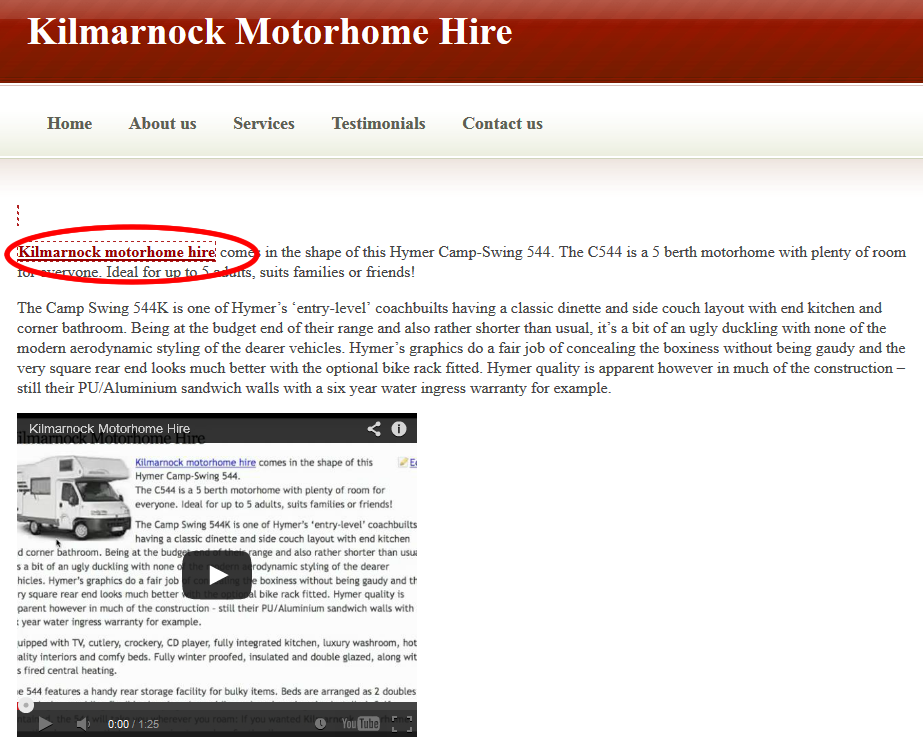
4.1 The domain is not indexed in Google
The TOX1 rule means that the link is on a page that is not indexed by Google and this could mean that Google has decided to give the domain a penalty. But it is worth keeping in mind that a non-indexed link could also mean that it is on a new domain that nobody has linked to yet or it has a problem in the robots.txt or meta robots tag. It is worth checking these things before you condemn the link completely. Having said that, a domain that is not indexed in Google will have no SEO benefit, so removing it is the better option if you are unsure. The example I gave above was a TOX1 link.
4.2 The link is on a page that doesn’t rank for its own title
If a page isn’t ranking for its own title in the first 30 pages of Google then there is something seriously wrong with it. This almost certainly means that it has a penalty. The exception to this might be if the page has a very common generic title like 'Partners' or 'Home' which will have a hard time ranking for these terms.
4.3.1 How to check with the Back Link Profiler ( BLP)
If you run a BLP Report you will need to enable the extra metric TitleRank, then you can sort the report to display:
- Page has TitleRank™ 30+,
- LRT Power*Trust™ Domain < 5 and
- LRT Power*Trust™ < 5
The TitleRank™ metric describes how far up a linking page ranks in Google for its page title. If it ranks on a very high page number or does not rank at all, it's probably penalized by Google.
4.3.2 How to check with Link Detox
The report by Link Detox will trigger a SUSP4 rule which means that the page the link comes from does not rank for the title of the page which is usually a sign that this page or domain is being penalized. SUSP4 is surprisingly common in a Link Detox report, especially where there has been a lot of automated link building.
4.4 The link is on a page that has been banned from Google
A site that is banned from Google is never going to be a good link. Link Detox can easily identify these by looking for a site that no longer has any rankings in Google, but has a LRT Power*Trust™ >0.
A link like this will trigger the SUSP27 rule. This is the case if we don’t see any rankings, but since the LRT Power*Trust is higher than zero, it means the domain should have some rankings, but doesn’t. We can, therefore, assume that Google penalized the domain. It's highly recommended that you review if this link is spammy or unnatural and then consider removing or disavowing it.
5. Is the link on a domain associated with a bad neighborhood?
This makes a lot of sense. If for example, you have a website about good parenting, you wouldn't want links from porn and gambling sites, would you? It is all a matter of being aware of your neighborhood and who you appear to be associated with.
5.1 Domain’s Theme is listed as suspicious (Hacking, Suspicious or Pornography) or high-risk
Most webmasters aren't looking for links from hacking or porn sites, but if you run a porn site, then maybe you would. This is where the classifying of the theme of your site is very important in Link Detox.
Even after classifying WilliamHill.com as a site about gambling, this link was flagged as being on a suspicious domain. This is on a Polish URL, http://rimuwonox.pev.pl/bet-on-horses-live-video.php linking to http://sports.williamhill.com/bet/en-gb/realtime
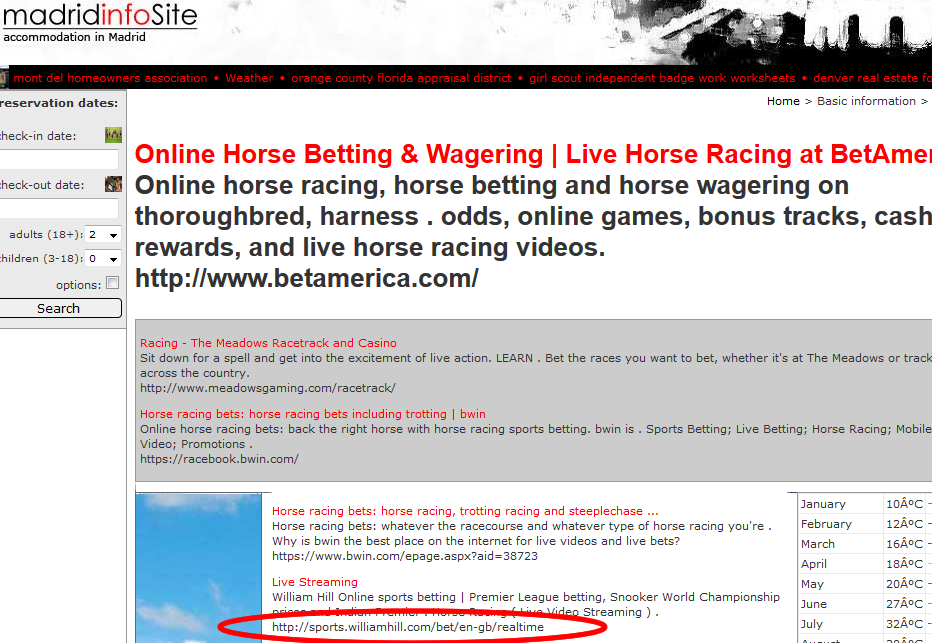
It doesn’t look like a good link for sure, a site about accommodation in Madrid (Spain) doesn’t really need to have links to a British sports betting site. Link Detox is very good at detecting suspicious themes.
5.1.1 Checking for suspicious themes with Link Detox
Link Detox will show the SUSP5 rule being triggered which means that the theme of the domain has been listed as Hacking, Suspicious or Pornography. For most webmasters, links from these type of websites are not what they want.
5.1.2 Checking for a high-risk score associated with the URL
If the SUSP20 rule is triggered it means that a high-risk score has been detected for this link and it is recommended that you review these links carefully, the higher the risk score the higher the probability that you should get rid of these links.
6. Is the link on a spammy directory?
Despite everything SEOs were told until 2012, directory links are now mostly worthless. Anybody who tells you that a money anchor text link in the resource box of an EzineArticle is a white hat link is wrong. But it is not just article directories.
6.1 Link Directory Links
For many years SEOs would fill link directories with their links. Quite often it wouldn't be just one link to the homepage, but multiple pages within the same link directory. In Link Detox the SUSP15 rule means that these links are coming from typical web link directories. These directories have obvious footprints. The only purpose of these directories was to artificially inflate link popularities and/or sell links. Although this used to work for SEOs it cannot be recommended these days.
Here is an example of a Link Directory link. Yes, I will hold my hands up and admit it is one of mine again! This is http://www.free-link-directory.info/detail/link-81908.htm linking to http://www.motorhomesdirect.co.uk/motorhome-hire/motorhome-hire-7/. Looking at this sort of link in 2014 it is hard to believe that links like this ever had any value, but they did!
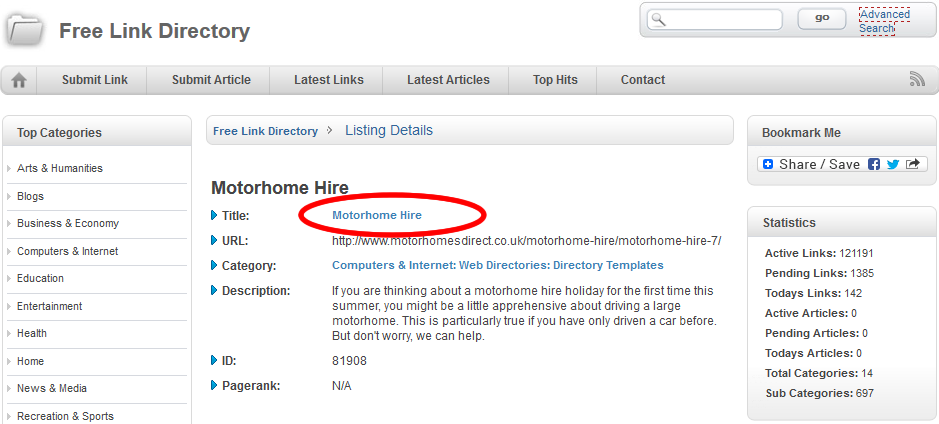
6.2 Article Directory Links
The SUSP16 means these links are coming from typical article directories which were the successor of link directories and often also automatically filled with useless articles just to get a link from as many domains as possible. Often these article directory pages were furthermore linked with spam links to increase their inbound links and thus make those otherwise useless pages more helpful. While this was usual practice for years for many SEOs it cannot be recommended these days. Here’s an example of one of mine, this is http://www.amazines.com/Travel_and_Tourism/article_detail.cfm/1759418?articleid=1759418 linking to http://www.motorhomesdirect.co.uk/.

6.3 Links coming from typical link voting directories
The SUSP26 rule means that it’s a link coming from link voting directories and is a common way to inflate link popularities and/or sell links which is not recommended anymore. I couldn’t resist sharing this example that I built years ago but would be insane to use now. This is http://www.mytoplist.gen.tr/story.php?id=28083 linking to http://www.motorhomesdirect.co.uk/location/north-east-england/ with the anchor text ‘Fast Tips for Learning German’ – what on Earth was I thinking!
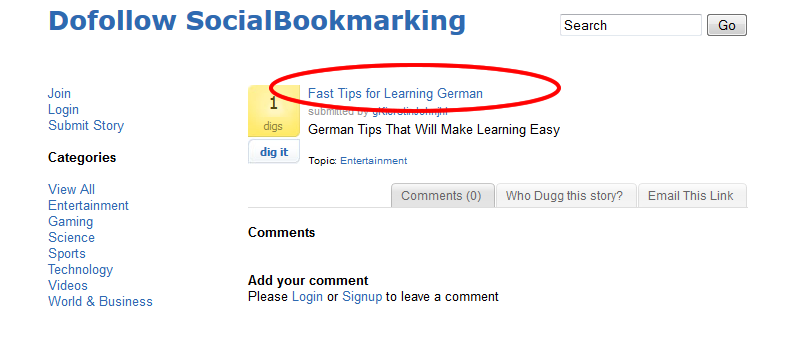
7. Is the link on a page with a massive amount of outgoing links?
The SUSP17 rule means that this page has more than 1,000 outgoing links. This could be a sign for a spammy blog or directory. Please ensure that you review these links carefully.
Here is an example of such a page, this is http://www.gyygle.com/detail.html which links to 1,486 URLs. You can see this number by enabling the ExtL Metric.
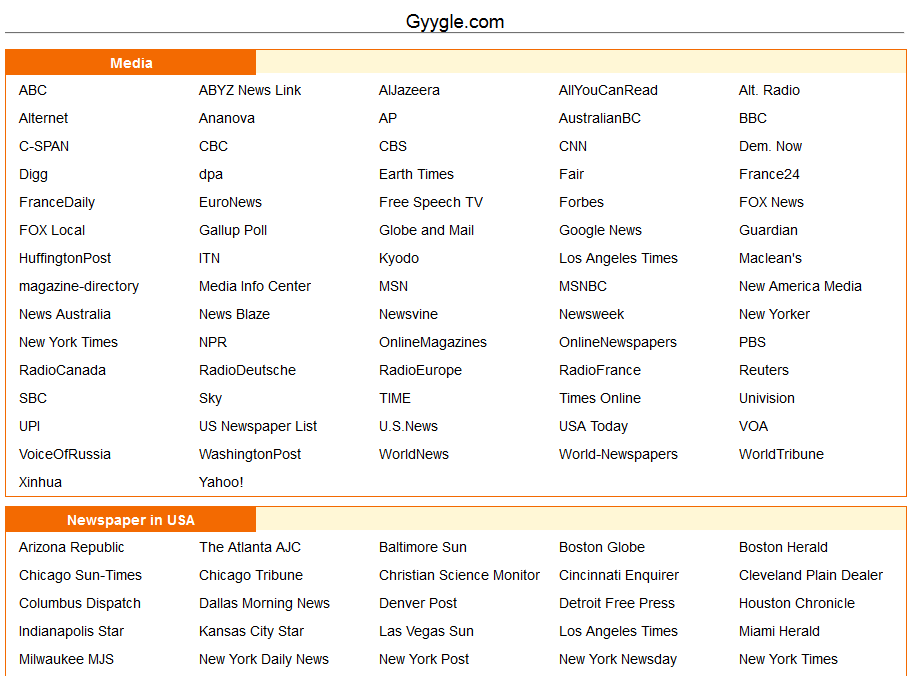
8. Is the link anchor text unnatural or suspicious?
I think we can all spot ridiculous unnatural anchor text now, but sometimes it really isn’t quite as obvious as you may think. Unnatural and suspicious link anchor text may also be flagged as a result of not just one link, but multiple links when they are considered collectively. Sitewide links are no longer a good thing and unnatural deep link ratios can stand out too. Again, by far the best tool for this is Link Detox which uses calculations of metrics, its own cross referencing with databases and its own secret algorithm.
8.1 Is the link highly unnatural?
Highly unnatural? What's that? If you are using Link Detox to check your links you may see the TOX3 rule has been triggered for some links. This means that the Link Detox Genesis™ algorithm classified this link as very unnatural. LinkResearchTools recommends removing links like these or disavowing them using the Google Disavow Tool. Sometimes I have a problem convincing clients that a TOX3 link is bad, especially when it looks legitimate. The truth is that I have submitted reconsideration requests to try and clear manual spam actions, only to find that Google came back with sample links that still violate their guidelines. More often than not these are TOX3 links. Here is an example on http://aaa.ukdirectorylist.co.uk/9510/iPhonefixed.html which is linking to http://www.iphonefixed.co.uk/
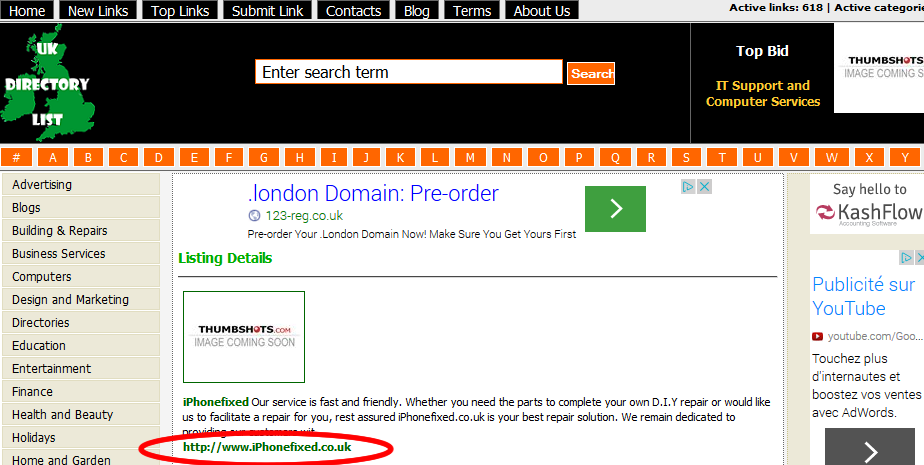
8.2 Sitewide Footer Links
Sitewide links in the footer of the page will trigger the SUSP11 rule in Link Detox. Today it is not likely that somebody will offer or try to sell you a sitewide link, but if they do it really isn't worth it. Big brands might be able to get away with it, but for the rest of us, it is probably more of risk than a benefit.
Here’s an image used by WilliamHill.com on a domain from Belarus http://www.pokerist.by/payment-systems/ linking to http://poker.williamhill.com/ru/ - because this image is sitewide and in the footer, it is not a good place for a link to be. There are 1,653 instances of this here.
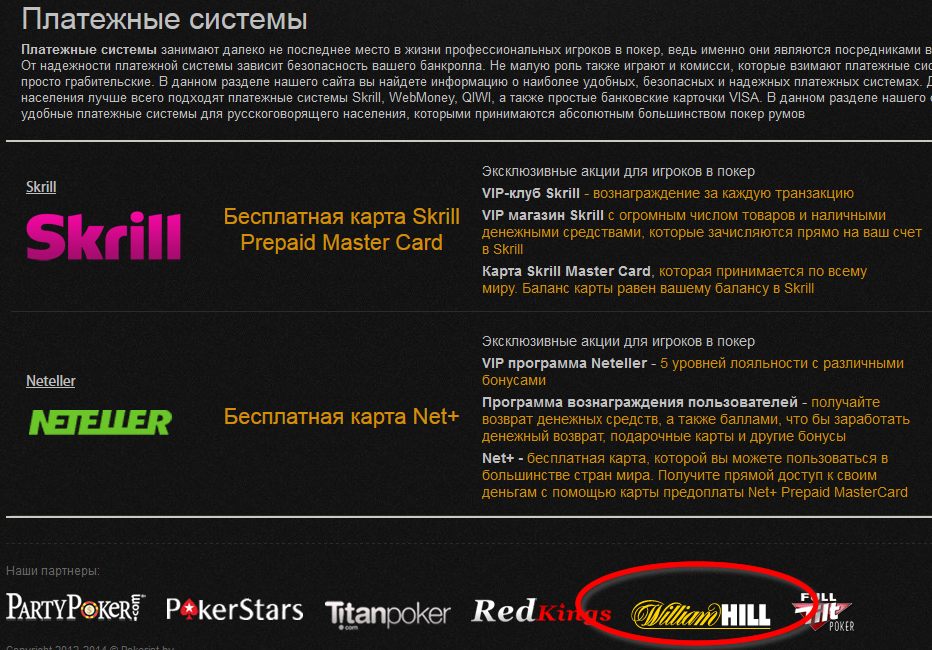
8.3 Hidden image links
Hidden images will trigger the SUSP25 rule in Link Detox. A hidden image link is usually a sign of bad linking tactics. The example below is actually a poor link on http://kansaionsen.blogspot.fr/2011/07/sento-in-china-facing-same-problems-as.html linking to http://www.retailmenot.com/view/ascentive.com which is about discount coupons for computer software. It is a dreadful link, but the hidden image is just a missing avatar on the comment. Nevertheless, if you read this https://support.google.com/webmasters/answer/66353?hl=en from the Google Webmaster guidelines you will read "Hiding text or links in your content to manipulate Google’s search rankings can be seen as deceptive and is a violation of Google’s Webmaster Guidelines."
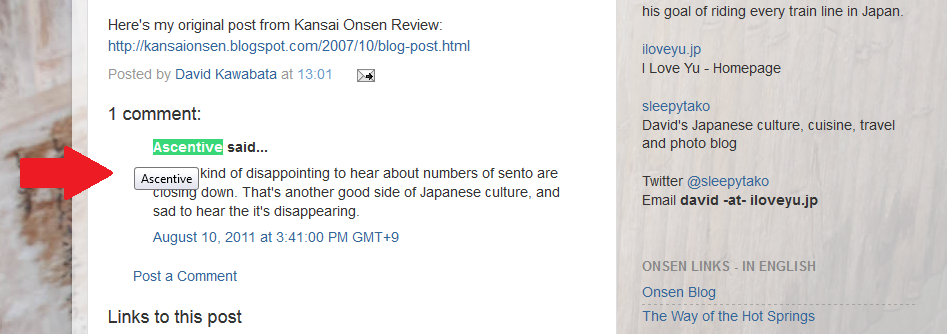
8.4 Are you overdoing the Money Keyword anchor text?
This is where you need to consider the link profile as a whole. Link Detox triggers the SUSP28 rule if the money keywords anchor text is found in more than 5% of the link profile. In the Real-Time Penguin times, most of us are aware that a low percentage of anchor text money links is the way to go, but some old school SEOs will still want to overdo them. Don't!
8.5 Are you overdoing the Compound Keyword anchor text?
Just like the Money Keyphrase anchor text you want to make sure that you are not overdoing your Compound Keyword anchor text. Compound Keywords are phrases like "iPhone screen replacement by iPhonefixed.co.uk" If you have more than 5% of these in your link profile the SUSP29 rule will be triggered in Link Detox.
8.6 Is the link on a spammy forum?
Spamming tools that we all used pre-Penguin like SENukeX and XRumer traditionally spammed lots of forums. These are now well known to our favorite search engine, so if you have links from these forums you need to be careful. Links with anchor text classified as Brand, Money or Compound coming from these sort of forums will trigger the SUSP30 rule in Link Detox. Generally, links like this are to be avoided.
9. Is the link on a domain that is part of a link network?
Link networks have been around for years now and many services did very well over the years, such as Linkvana and BuildMyrank. Linkvana and BuildMyRank were considered to be white hat, legitimate services until Penguin. Google has taken no prisoners with these link networks and destroyed each one in turn. Google continues to do so and this has forced the link networks more underground, like the elusive Russian SAPE network and ones that crop up from time to time in the Warrior Forum. Blackhat SEOs will continue to use their own link networks and Google will get more clever and eventually penalize the networks. If you decide to use these sort of services, you have to be responsible for your own actions and manage the risk. You must treat every day you get traffic as if it is your last one, it could all be gone tomorrow.
It is possible that you could have used some bad SEO companies in the past who put your links on their own private link networks without you knowing. If this is the case there are a few things you can easily check.
9.1 Does it have the same IP or Class C IP as some of your other links?
I know we have all been tempted by the 'shiny objects' in places like the Warrior Forum. Offers promising undetectable, high PR, Penguin Friendly links that are going to skyrocket your site to #1 in Google are sometimes hard to resist! Cheap private networks don't even bother to spread their hosting around different IPs properly.
IP addresses have a format that has an IP address which is made of 4 numbers separated by dots as in aaa.bbb.ccc.ddd, each number ranges from 0 to 255. This is the IPv4 format. If the 'ccc' block of the IP address appears too often in a link profile this could raise a flag.
The SUSP7 rule is triggered if multiple links have the same IP address, which could mean that it is a link coming from a possible spammy link network.
The SUSP8 rule means that it has detected links coming from the same Class-C IP address as other linking domains.
Link Detox will trigger the SUSP3 rule for links that are:
- on a page which has more than 10 backlinks from 1 Class-C,
- has a LRT Power*Trust™ Domain < 5 and
- has a LRT Power*Trust™ < 5
9.2 Do you have links that come from domains with the same domain name registrant?
You would think it unlikely that somebody would use their own name as the registrant on multiple domains in a private link network, but it does happen. In my case study about williamhill.com, I uncovered some link networks from India that were linking to williamhill.com. These were ridiculously easy to spot as all the domains were registered by the same individual.
In Link Detox, the SUSP6 rule may be triggered to alert you to a possible link network. SUSP6 means that Link Detox has detected links coming from the same domain name registrant as other linking domains. This normally means that the links are possibly from a link network. You should always be aware of your neighborhood.
9.3 Do you have links that come from domains with the same domain name server?
The SUSP9 rule means that it has detected links coming from the same DNS (Domain Name Server) as other linking domains. It is possible that you just happen to have a lot of links from sites that use a large shared hosting company like HostGator, where they have generic Name Server values for large numbers of sites. It is probably more than likely that some of your links are coming from very simple link networks that share the same DNS.
9.4 Does the source domain have a negative Link Velocity?
If you have a link on a page from a domain which has a Link Velocity Trend < -70% this is probably part of an expired domain link network or a domain that the public has lost interest in. Either way, this is going to be a very suspicious link.
A negative Link Velocity like this is easy to spot with Link Detox. The SUSP10 rule will be triggered meaning that the domain has a Link Velocity trend dropping by 70%. Link Detox does this in a rather ingenious way by analyzing the link growth of every domain and if the link growth of the last 4 months is significantly smaller than it was in the last 12 and 24 months, the SUSP10 will come into play. This is usually a sign that the domain has been abandoned by the current owner. This has been a common occurrence since Penguin has become part of our SEO lives.
9.5 Does the source domain have the same Google Analytics code as other linking domains?
The SUSP12 rule in Link Detox means that the domain name has the same Google Analytics (GA) code as other linking domains. If multiple domains have the same Google IDs then it is a strong signal of a possible link network. A legitimate, but debatable, use of the same GA code over and over could be derived from somewhere like a web design agency. A web design agency could feasibly have lots of clients that they like to manage with the same GA account. The question you might ask then is “why are they all linking back to the same place?”. Usually, web design agencies that do this are the same ones who put ‘Cheap Web Design by Terrible SEO Company’ in their client’s sitewide footers.
9.6 Does the source domain have the same Google Adsense code as other linking domains?
I haven’t seen this for a long time, but around 2006 I became interested in a company based in Texas called webhostforseo.com which was founded by Todd Spears. Todd is extremely knowledgeable about web servers, server security, and blackhat linking techniques. I was stunned when I heard somebody talk about Adsense on one of the unofficial training videos about building your own blog network. It wasn’t Todd, but they went though buying domains with Privacy, using different Class C IPs and posting unique content on the blog network. Not bad so far, I thought and then he said: “So if you have all these blogs you may as well monetize them with Adsense”. I knew then that was sheer insanity! “Hey Google I’ve just built a blog network with 50 blogs that all belong to me!”
Most people running private link networks stopped using Adsense when it stopped making cents and stopped making sense!
In Link Detox the SUSP13 rule means that the domain name has the same Google Adsense Publisher ID as other linking domains. If multiple domains have the same Google IDs then it is a strong signal of a possible link network.
9.7 Does the source domain have the same Website Footprints as other linking domains?
This is one of the top secret areas of Link Detox, which makes it the only tool that can be relied upon to work out if there are too many similar footprints in your linking domains. Link Detox will trigger the SUSP22, SUSP23 and the SUSP24 rules meaning that the Link Detox Genesis™ footprint detection found this domain to be closely related to other domains that link to you. This is often the case when the majority of your links come from similar sources like Wordpress, Wikis or a certain kind of CMS.
Conclusion
If you have managed to read through all of this, congratulations! Checking the quality of a link is not easy at all. We have seen that there are a multitude of factors that can affect the quality of a link. To make things more complicated, sometimes you can’t consider one link on its own, but you must consider the impact this link will have when you are taking the rest of your links into account.
The one tool that shines is Link Detox as this is an incredibly powerful tool that does all the hard work for you. Even better is the fact that you can use it to check links you already have as well as links that you think you might be able to get before you even go to the trouble of getting them. Getting high-quality links has never been easy and it is getting harder, but Link Detox can really help.
If you have a great site that gets lots of links naturally because people love your content, you might have a different problem. If you are acquiring links that you have no control over you need to have a regular Link Detox schedule to make sure you are not inadvertently putting your site at risk.
If you have not used LinkResearchTools yet, especially Link Detox, I think you know what you need to do next.
